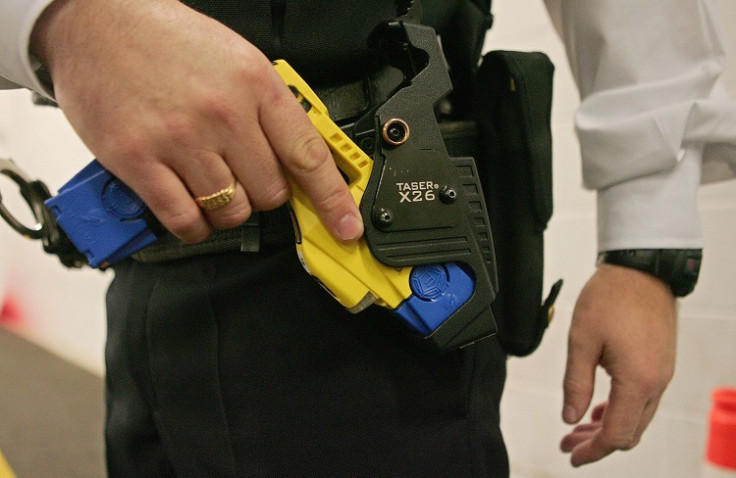United Nations to quiz Britain over Taser use by police on children

Taser use by British police on children is likely to be high on the agenda when UK government officials are quizzed about their compliance with the United Nations Convention on the Rights of the Child.
In 2008 when Britain was last measured up, the UN said that it wanted England and Wales to treat "Taser guns and AEPs [attenuating energy projectiles] as weapons subject to the applicable rules and restrictions and put an end to the use of all harmful devices on children".
But the most recent figures show that police use of the 50,000-volt stun guns has increased since that hearing. More than 400 children had tasers drawn on them by police in England and Wales in 2013, a 38% increase on the previous year. They were fired 37 times at 11 to 17-year-olds. The figures were obtained through a Freedom of Information request by the BBC.
Ahead of the hearing in Switzerland, A UN source told the Independent on Sunday newspaper that the UK had been asked to provide date on police Taser use. "Members do intend to raise the issue, along with stop and search and the appropriate use of force, especially regarding adolescents," they said.
Introduced by British police in 2003, their use has been criticised as unsafe in some quarters, as a number of deaths have been associated with the shocks they deliver. A database run by The Guardian newspaper, tracking killings by US police and other law enforcement agencies, called The Counted, classified 47 deaths of the 965 killed as Taser events.
Carla Garnelas, the co-director of the Children's Rights Alliance for England (Crae), said: "The use of Taser on children is a breach of their human rights. UN bodies have repeatedly called for the UK government to ban their use on children, highlighting the serious risk of physical and psychological harm they pose, yet the use of Taser on children continues."
Critics have also argued that tasers can cause cardiac arrhythmia in susceptible subjects, possibly leading to heart attack or death in minutes by ventricular fibrillation, which leads to cardiac arrest and — if not treated immediately — to sudden death.
More than two-thirds of people who had a Taser used against them in England and Wales between 2010 and 2014 had been identified by police as mentally ill, according to Home Office figures.
Police use of the stun guns increased over the period from 6,238 incidents in 2010 to 9,196 in 2016, and there has been a corresponding rise in the number of incidents involving mentally ill people, from 2,737 in 2010 to 4,200 in 2014.
A Home Office spokesman said that Taser use provided police with "an important tactical option when facing potentially physically violent situations. All officers trained in the use of Taser must consider the vulnerability of the individual, and factors such as age and stature form part of this assessment," they said. "But just as with sensitive powers like stop and search and mental health detention, the police use of force warrants proper accountability and transparency."
They added: "That is why the Home Secretary commissioned Chief Constable David Shaw to lead an in-depth review of the publication of taser data and other use of force by police officers, to ensure these powers are being used appropriately."
© Copyright IBTimes 2025. All rights reserved.



















